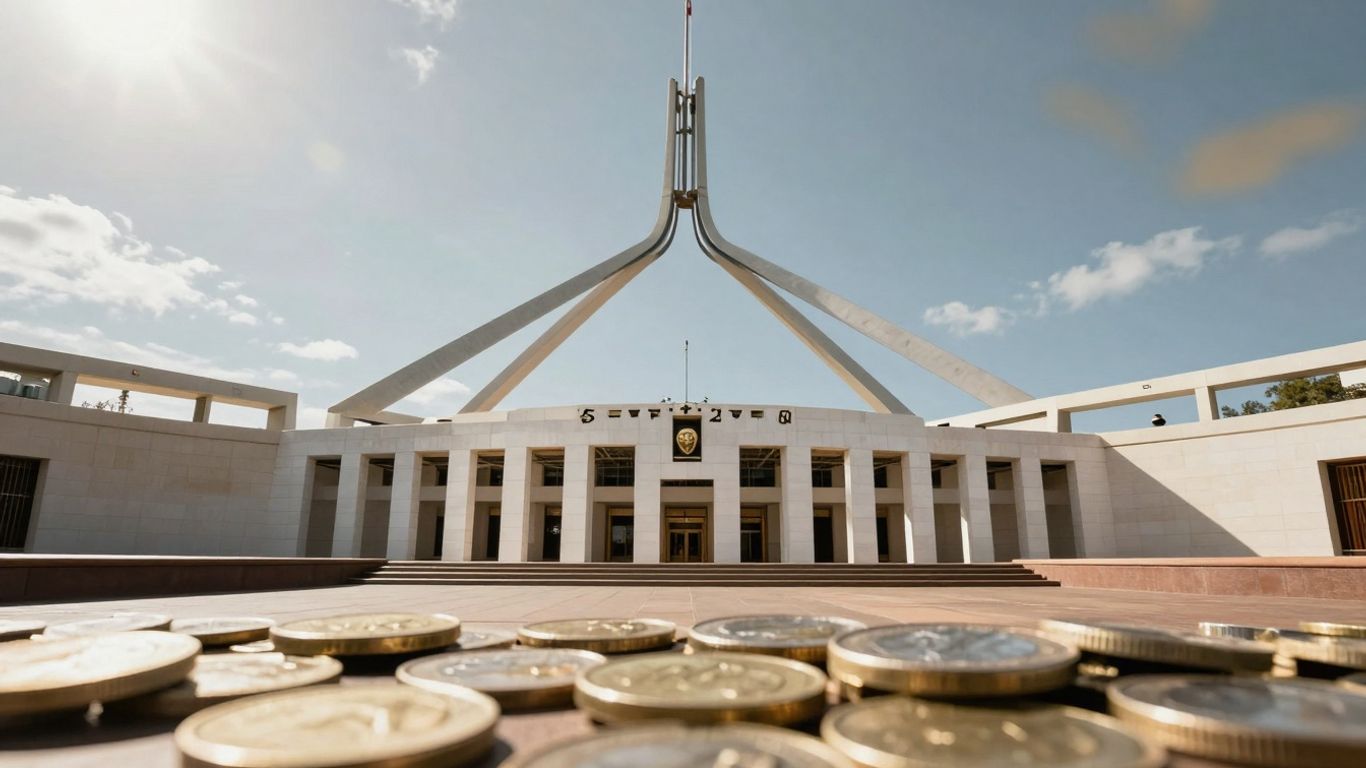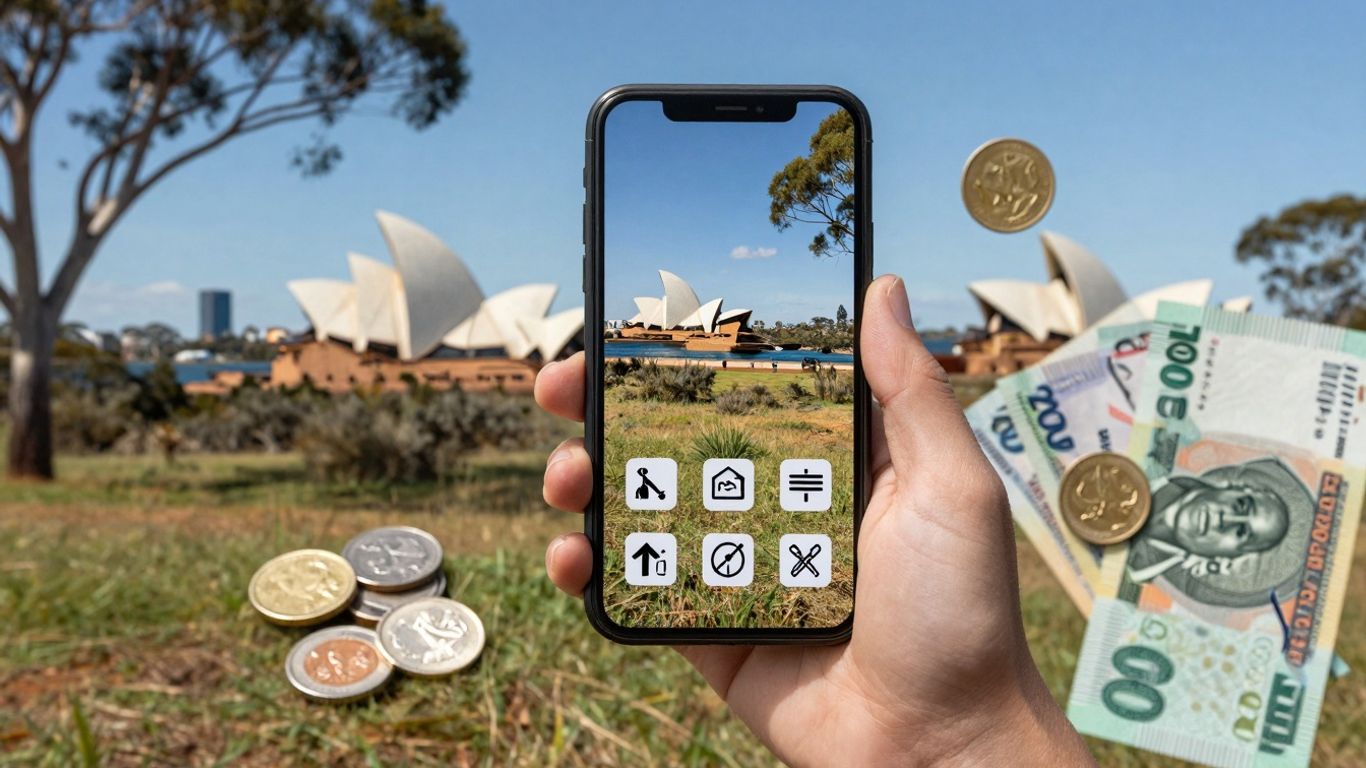Finding the right Telstra NBN plan can be a bit of a maze, especially with so many options out there. This guide is here to help you navigate the various plans and prices, so you can make an informed choice that suits your household needs. Whether you’re after speed, data allowance, or just the best bang for your buck, we’ve got you covered. Let’s break down the Telstra NBN price structure and see what works best for you.
Key Takeaways
- Telstra’s NBN plans come with unlimited data, making them suitable for most households.
- Monthly costs for NBN plans can vary, with Telstra generally being on the pricier side compared to competitors.
- Consider your household’s internet usage and speed requirements when choosing a plan.
- Promotions and discounts can significantly lower your initial costs, so keep an eye out for current offers.
- Switching to Telstra NBN is straightforward, but be aware of potential costs and the transition process.
Understanding Telstra NBN Price Structure
Monthly Costs and Plans
Okay, so let’s break down what you’re actually paying each month for your Telstra NBN. It’s not always as straightforward as the advertised price, is it? Telstra NBN plans Telstra NBN plans generally come in a few different speed tiers, like NBN 25, NBN 50, NBN 100, and even faster options. The faster the speed, the higher the monthly cost. For example, you might see an NBN 25 plan for around $80 a month, while an NBN 100 plan could be closer to $90. These prices can also vary depending on whether you bundle other services, like a home phone line.
Additional Fees and Charges
It’s not just the monthly plan fee you need to think about. There can be other costs involved. For instance, if your place is a new development and hasn’t been connected to the NBN before, you might have to pay a one-off new NBN development charge of around $300. Plus, there are modem fees if you need a new modem. Some providers might also sneak in extra account fees, like if you don’t pay by direct debit or if you use a credit card. Always read the Critical Information Summary (CIS) carefully to avoid surprises!
Comparing Telstra with Competitors
Telstra isn’t the only player in the NBN game, and it’s worth having a look around to see what other providers are offering. You might find similar speed tiers for less with companies like Dodo or Vodafone. However, Telstra often justifies its higher prices with better customer service and more reliable network coverage. Here’s a quick comparison of NBN 25 plans from different providers:
| Provider | Monthly Cost | Data Limit | Notes |
|---|---|---|---|
| Telstra | $80 | Unlimited | Known for customer service and reliability. |
| Dodo | $65 | 10GB | Budget-friendly, but limited data. |
| Optus | $69 | Unlimited | Reliable internet with entertainment bundles. |
| Vodafone | $69.99 | Unlimited | Cost-effective option. |
Keep in mind that the cheapest option isn’t always the best. Consider what’s important to you – is it price, speed, data, or customer service? Weighing up these factors will help you find the best NBN plan for your needs.
Exploring Telstra NBN Plans
Alright, let’s have a yarn about Telstra’s NBN plans. Choosing the right one can feel like picking a winner at the races – you want speed, reliability, and a good price, right? Telstra has a few options, and it’s worth sussing them out to see what fits your household best. They’re not the only player in town, but they’re a pretty big one, so let’s get into it.
NBN 25 Plan Overview
So, the NBN 25 plan is often called the ‘Basic’ plan. It’s your entry-level option, good for smaller households or those who don’t do a heap of streaming or downloading. Think of it as your reliable little hatchback – gets you from A to B, but not winning any speed races. It’s generally sufficient for:
- Checking emails
- Casual browsing
- Streaming on one device at a time
If you’ve got a bunch of people trying to watch Netflix in 4K at the same time, though, you might find it a bit sluggish. Other providers like Exetel, Superloop, Tangerine, and More also offer affordable NBN 25 plans, so it’s worth comparing.
NBN 50 and NBN 100 Options
Now we’re talking! The NBN 50 and NBN 100 plans are where things start to get interesting. NBN 50 is like upgrading to a decent sedan – more power, more room to move. NBN 100? That’s your sporty number, ready to handle pretty much anything you throw at it.
- NBN 50: Ideal for families who stream regularly, do some online gaming, and have multiple devices connected at once.
- NBN 100: Perfect for larger households, serious gamers, or anyone who works from home and needs a super-reliable connection.
With these plans, Telstra often throws in extras like their Internet Optimiser, which lets you prioritise certain activities.
Family and Bundle Plans
Telstra loves a good bundle, and their family plans are often where you can snag the best value. These usually combine your NBN connection with other services like:
- Mobile phone plans
- Telstra TV
- Home phone (if you’re still rocking one of those!)
The advantage here is convenience – one bill, one provider to deal with. Plus, you often get discounts for bundling multiple services. Keep an eye out for these, as they can save you a fair bit of coin in the long run. Just make sure you actually need all the services in the bundle, otherwise you might be paying for stuff you don’t use. Telstra also offers 1TB 5G internet plan for residential customers with fast download speeds on a month-to-month contract.
Factors Influencing Telstra NBN Price

Speed Requirements
Okay, so you’re sussing out Telstra NBN, right? First thing’s first: how much speed do you actually need? This is a biggie because it directly impacts the price. An NBN 25 plan is cheaper, but if you’ve got a house full of streamers and gamers, it’s gonna be a bad time. Faster speeds cost more, plain and simple. Think about what everyone in your house does online – that’ll give you a clue. Also, the availability of each of these NBN connections can vary depending on your location.
Data Usage Patterns
These days, most Telstra NBN plans come with unlimited data, which is pretty sweet. But, it’s still worth thinking about your data habits. If you’re constantly downloading massive files or have a bunch of smart home devices sucking up bandwidth, it’s good to be aware. While unlimited data is common, some providers might still have sneaky clauses or throttling policies, so read the fine print.
- How many hours of streaming do you do per week?
- Do you regularly download large files?
- How many devices are connected to your Wi-Fi at once?
Contract Length and Flexibility
Contract length is another factor that can affect the price. Generally, signing up for a longer contract (like 24 months) might get you a slightly better monthly rate. But, you’re locked in! If you reckon you might move house or want to switch providers sooner, a no-contract plan gives you way more freedom, even if it costs a few extra dollarydoos each month. Just something to keep in mind. Also, there may be a few other costs to consider when you first sign up to your new plan:
- Modem fees
- New NBN development charge
- Additional account fees
Locking yourself into a long-term contract can seem appealing with potential discounts, but it’s crucial to weigh the benefits against the flexibility of a month-to-month plan. Consider your future needs and potential changes in circumstances before committing.
Promotions and Discounts on Telstra NBN
Current Offers and Deals
Telstra, like other internet providers, often has special deals to attract new customers or keep existing ones happy. These can change pretty quickly, so it’s worth checking what’s available right now. You might find discounts on your monthly bill, bonus data, or even bundled entertainment packages. For example, iiNet has a deal for their NBN50 plan offering a discount for the first six months. Keep an eye out for similar promotions from Telstra.
- Check the Telstra website regularly.
- Sign up for their email list.
- Follow them on social media.
Loyalty Discounts
Sticking with Telstra can sometimes pay off. They might offer loyalty discounts to customers who have been with them for a while. These could be small perks, like extra data, or bigger savings on your monthly bill. It never hurts to ask! Loyalty discounts are a great way to save money.
It’s always a good idea to call Telstra and ask if there are any loyalty programmes or discounts you might be eligible for. Sometimes, they don’t advertise these widely, so you need to be proactive.
Seasonal Promotions
Around certain times of the year, like Christmas or EOFY, Telstra might roll out special seasonal promotions. These could include discounted NBN plans, bonus entertainment subscriptions, or even free hardware. These deals are usually time-limited, so you need to be quick to grab them. Keep an eye out for these, especially around major holidays or the end of the financial year. You might find a great NBN deal if you time it right.
Here’s a quick look at what seasonal promotions might look like:
| Season | Possible Promotion |
|---|---|
| Christmas | Discounted NBN plans with free streaming services |
| EOFY | Bonus data or cashback offers |
| Back to School | Discount on family bundle plans |
How to Choose the Right Telstra NBN Plan
Picking the right NBN plan can feel like a mission, but it doesn’t have to be! It’s all about figuring out what you actually need from your internet and then matching that to what Telstra NBN plans are on offer. Let’s break it down.
Assessing Household Needs
First things first, how many people are in your house, and what do they do online? A single person who mostly browses and streams a bit will have very different needs than a family of four with multiple devices gaming, streaming in 4K, and working from home. Think about peak usage times – when is everyone online at once? This will help you determine the speed you need. Also, consider if everyone is using WiFi or if some devices are connected via ethernet cable.
- Number of users
- Typical online activities (streaming, gaming, working from home)
- Number of connected devices
Evaluating Speed vs. Price
Okay, so you’ve got a handle on your household’s needs. Now, let’s talk speed and price. Telstra offers a range of NBN speed tiers, and naturally, the faster the speed, the higher the price. It’s about finding the sweet spot where you’re getting enough speed without paying for more than you need. Here’s a rough guide:
| Speed Tier | Typical Use | Price (Example) |
|---|---|---|
| NBN 25 | Basic browsing, streaming in SD, light usage | $80/month |
| NBN 50 | Streaming in HD, moderate usage | $90/month |
| NBN 100 | 4K streaming, gaming, heavy usage | $110/month |
Keep in mind these are just examples, and prices can change. It’s always worth checking Telstra’s website for the most up-to-date info. Also, think about whether you really need that extra speed all the time, or just occasionally. If it’s just occasional, you might be able to get away with a slower, cheaper plan.
It’s easy to get caught up in the hype of faster speeds, but honestly, most households don’t need the fastest plan available. A good way to save some money is to start with a slightly slower plan and then upgrade if you find it’s not meeting your needs. Telstra usually makes it pretty easy to change plans.
Understanding Contract Terms
Finally, have a good look at the contract terms. Telstra often offers plans with no lock-in contracts, which gives you the flexibility to switch providers if you’re not happy. However, sometimes you can get a better deal if you sign up for a longer contract. Just make sure you’re comfortable with the commitment before you sign on the dotted line. Check for things like:
- Contract length
- Early termination fees
- Data limits (though most Telstra plans have unlimited data)
- Any included extras (like a modem or access to Telstra Plus)
Switching to Telstra NBN

Steps to Switch Providers
So, you’re thinking about jumping ship and joining Telstra for your NBN? Good on ya! It’s not as scary as it sounds. First things first, don’t cancel your current service just yet. That’s a rookie mistake. Let Telstra handle the switcheroo. Here’s a basic rundown:
- Check Telstra NBN availability at your address. No point getting excited if they don’t service your area, right?
- Sign up for a Telstra NBN plan. They’ll usually contact your current provider for you.
- Wait for the go-ahead. Telstra will give you a date for the switch.
- Plug in your new Telstra modem (if you got one) on the day.
- Test your connection. If all’s well, give your old provider a call to confirm the cancellation (Telstra should do this, but double-checking never hurts).
Potential Costs of Switching
Okay, let’s talk dosh. Switching NBN providers isn’t always free. Keep an eye out for these potential costs:
- Early termination fees: If you’re still under contract with your current provider, they might sting you with a fee for leaving early. Check your contract!
- Setup fees: Telstra might charge a setup fee, especially if you need a new connection. Sometimes they waive these as part of a promotion, so keep an eye out.
- Modem costs: If you need a new modem, that’s an extra expense. Some plans include a modem, while others let you BYO modem with your NBN plan.
It’s always a good idea to read the fine print before signing up for anything. Pay close attention to the Critical Information Summary (CIS) to understand all the potential fees and charges.
What to Expect During Transition
Alright, so you’ve signed up, and now you’re waiting. What happens next? Well, usually, the transition is pretty smooth. You might experience a short period of downtime while the switch happens – usually just a few minutes. Telstra will usually give you a heads-up about when this will occur. If you’re using a new modem, make sure you’ve plugged it in correctly. If you’re having trouble, Telstra’s tech support can usually walk you through it. And if you’re eligible, you might even be able to get NBN fibre upgrades to improve your connection. Just remember to be patient, and you’ll be streaming Netflix in no time!
Customer Support and Service Quality
Let’s be real, no one wants to call their internet provider. But when things go wrong, having decent customer support is a must. So, how does Telstra stack up?
Telstra’s Customer Service Reputation
Telstra’s customer service gets a mixed bag of reviews. Some people reckon it’s great, others… not so much. You’ll find plenty of folks online sharing their horror stories, and just as many singing their praises. It really seems to depend on who you get on the phone, and what the issue is. Some customers express extreme dissatisfaction with Telstra, describing the company as unworthy of even one star. It’s a bit of a lottery, to be honest.
Support Channels Available
Telstra offers a few ways to get in touch:
- Phone: The classic call-centre approach. Be prepared for potential wait times, especially during peak hours.
- Online Chat: A potentially quicker option for simple queries. It can be hit or miss depending on the agent’s knowledge.
- In-Store: If you prefer face-to-face interaction, you can visit a Telstra store. This is handy for more complex issues or if you need to show someone the problem.
- Telstra Plus App: You can manage your account and get support through the app. This is often the easiest way to check your data usage or pay your bill.
Dealing with Telstra can sometimes feel like navigating a maze. It’s not always straightforward, and you might need to be persistent to get your issue resolved. Having all your account details handy and being clear about the problem will definitely help speed things up.
Troubleshooting Common Issues
Got slow internet? Here are a few things to try before you call Telstra:
- Restart your modem and router: This is the golden rule of tech support. Turn them off, wait 30 seconds, and turn them back on.
- Check your NBN connection box: Make sure all the lights are on and behaving as expected. If something looks off, consult the manual or Telstra’s website.
- Run a speed test: See if you’re actually getting the speeds you’re paying for. There are plenty of free speed test websites available. If your speeds are consistently low, that’s a good sign there’s a problem.
- Check for outages in your area: Telstra’s website or app should have information about any known outages. This can save you time if the problem isn’t on your end.
Remember to document everything! Keep a record of your calls, chat logs, and any troubleshooting steps you’ve taken. This can be helpful if you need to escalate the issue. If you’re still having trouble, it might be time to contact Telstra NBN support.
Wrapping It Up
So, there you have it! Finding the best Telstra NBN price doesn’t have to be a headache. With a bit of research and comparison, you can snag a plan that fits your needs without breaking the bank. Remember, it’s all about what works for your household. Whether you’re a casual browser or a streaming enthusiast, there’s a plan out there for you. Don’t forget to keep an eye out for special deals and discounts, as they can save you a pretty penny. Happy internet hunting!
Frequently Asked Questions
What is the average cost of an NBN plan with Telstra?
The average monthly cost for a Telstra NBN plan is about AU$80, which includes unlimited data.
Are there any extra fees when signing up for Telstra NBN?
Yes, there can be additional fees such as setup charges or equipment costs, so it’s good to check before you sign up.
How does Telstra compare to other internet providers?
Telstra is often more expensive than some competitors, but it is known for good customer service and reliable internet.
What types of NBN plans does Telstra offer?
Telstra has several plans, including NBN 25, NBN 50, and NBN 100, catering to different speed needs.
Can I get discounts on my Telstra NBN plan?
Yes, Telstra sometimes offers promotions or discounts, especially for new customers.
How do I switch to Telstra NBN from another provider?
You can switch by signing up for a Telstra plan online, and they will help you with the transition process.





